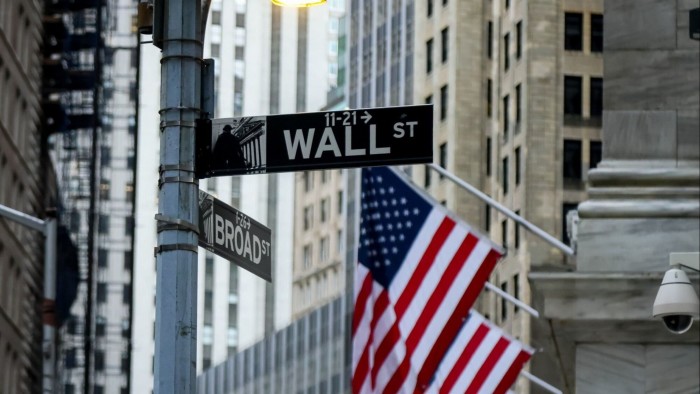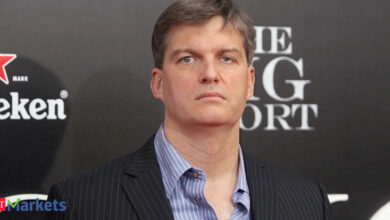Markets hit record highs as ‘Fomo’ infects investors

Stay informed with free updates
Simply sign up to the US equities myFT Digest — delivered directly to your inbox.
Stocks have struck record highs this week while borrowing spreads for US companies have shrunk to their tightest this century, as investors warn markets are “priced for perfection” despite mounting risks.
US equities have rebounded from their bruising trade war sell-off earlier this year in a run that has propelled tech giants Nvidia and Alphabet to multitrillion-dollar valuations, but is now sweeping up stocks of all shapes and sizes.
The blue-chip S&P 500 and tech-heavy Nasdaq Composite — up 14 per cent and 17 per cent, respectively, this year — set fresh record highs on Friday. The small-cap Russell 2000 also topped its November 2024 peak after the Federal Reserve cut interest rates on Wednesday.
The rally extends across risky asset classes, with the additional borrowing costs that high-grade US companies pay over US Treasuries dipping below 0.8 percentage points, their tightest level since 1998.
“It’s fair to say that you’ve never been paid less to take risk,” said Jamie Patton, co-head of global rates at US asset manager TCW. “It’s not like this is specific to any particular asset class. Every price seems to be indicating perfection.”
But she warned there was an “increasing paradox” with rising geopolitical and trade risks, as the economic impact of Donald Trump’s trade war becomes clear.
The rally is not limited to the US: the MSCI All Country World index, which tracks stocks across developed and emerging economies, has hit an all-time high. Emerging market stocks, shunned by investors in recent years, have outstripped the global index in 2025, in a sign of investors’ increased risk-taking.
European and US credit has rallied in lockstep. Borrowing costs for several French companies have fallen below those of their government in recent weeks, a rare move that in effect means investors no longer demand extra compensation for lending to the corporate sector.
Ben Inker, co-head of asset allocation at GMO, said “fear of missing out . . . does seem to be what is going on, the assumption that everybody should be able to get rich”.
Wafer-thin credit spreads were the “most mystifying” element of the rally, while the small-caps record high was striking given the weakening US economy, he warned. “I just do not understand how you could not think that the path of economic outcomes is pretty volatile.”
In equity markets, bets on the rise of artificial intelligence have dominated trading floors and powered US markets to dizzying heights over the past decade. But stocks’ record valuations as a multiple of companies’ sales, and the outsize contribution to the rally of just a few tech companies, have raised alarm bells.
“We’ve got really, really high geopolitical risks, an economic situation where the [US] job market is slowing and inflation is not fully under control, and extreme and historic market concentration,” warned Kasper Elmgreen, chief investment officer for fixed income and equities at Nordea Asset Management. “Valuations don’t leave a lot of room for error.”
Investment firm GQG Partners this month described the stock market as “dotcom on steroids” — a reference to the 1990s internet stock boom and bust.
“Investors [are] seemingly making a one-way bet on the AI mania, while appearing to ignore alarming fundamental issues,” said the GQG paper, pointing to lofty earnings multiples, slowing revenue growth and the rising investment needs of the big AI firms like chipmaker Nvidia.
The US stock recovery has been supported by retail investors and companies piling in to “buy the dip”, a series of tariff deals that have averted a worst-case scenario on trade, and tech giants’ robust second-quarter earnings.
Matt Eagan, portfolio manager at Loomis Sayles, said that sky-high asset prices suggested investors were banking on “productivity gains of the kind we have never seen before” from AI. “It is the number one thing that could go wrong.”
Pouring fuel on the stocks and credit rally in recent weeks have also been mounting expectations that the Fed will slash borrowing costs over the coming year to support the world’s biggest economy, after dire jobs numbers suggested it was stalling. According to Bank of America, global stocks saw their biggest weekly inflow of 2025 this week as investors cheered the first signs of looser monetary policy.
Wednesday’s quarter-point rate cut from the Fed is expected to be followed by at least four more by this time next year, according to futures markets. That has sparked gains in short-term US Treasuries, taking the two-year yield to as low as 3.5 per cent this month, close to its lowest since 2022. Yields move inversely to prices.
“At the same time that the labour market appears to be slowing, risk markets seem exuberant,” wrote Neel Kashkari, Minneapolis Fed president, in a Friday post, adding that “any sign of new economic weakness could pop [that] exuberance”.
Data visualisation by Ray Douglas
Credit: Source link






